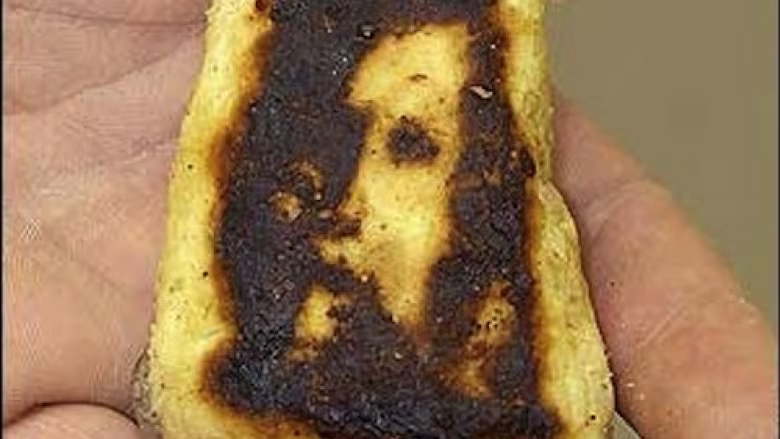Leaderboard
Popular Content
Showing content with the highest reputation on 10/30/24 in all areas
-
The problem with relying on pop-sci writing. The m in E=mc^2 is at rest (it’s a condition in Einstein’s derivation). The full equation is E^2 = p^2c^2 + m^2c^4 The energy of translational motion is include in the p^2c^2 term Mass can increase from motion, but not translational motion of the center of mass. Vibrational or rotational energy will increase the mass of the system. An atom or nucleus in an excited state is more massive than in the ground state.1 point
-
The Lorentz factor is almost exactly 7. Some call the 1.4 million kg the relativistic mass but technically the mass of the ship is the frame invariant proper mass of 200,000 kg. That's just a terminology thing. The ship relativistic momentum goes up to γvm, so you can compute its kinetic energy by multiplying that by v. Also note that once you've given your ship a specific mass, one has to wonder how it accelerates without losing any of it, which is why most hypothetical scenarios avoid any mention of masses since it introduces so many problems that are not illustrative of the point of the exercise. Not sure how your fusion engine produces thrust. Most fusion reactors only produce heat, and maybe electricity from that, neither of which immediately translates to thrust. So anyway, unless you are firing this object out of an insanely long rail gun, any calculation of energy usage needs to factor in where the energy is produced and where it is going, and what is left at each point. Don't know what that phrase means. You talk about energy, but then follow it up with a specification of power (so many joules per sec). If the ship is accelerating at 1g, then it's power consumption is presumably proportional to its current mass, so integration is needed. One also has to factor in energy imparted to the reaction mass, and all that scaled by some kind of efficiency rating. The most efficient engine might be something like an ion drive, but those don't put out enough force for 1g of acceleration. 200 tons is seemingly not enough to provide life support for Joanne for all those years, let alone any left over for trivialities like propulsion. Perhaps it is really good at recycling.1 point
-
1 point
-
No, I meant contamination of the planet by micro-organisms from Earth, i.e. we should not introduce contamination to the planet.1 point
-
Good questions. Why not the hydrogen atom? Well, hydrogen is a little more complicated. It’s made of a proton and an electron and that electron’s got U(1) symmetry written all over it, which breaks at low temperatures. So, hydrogen isn't the best candidate because it's tied to electromagnetic interactions, not exactly stable if you're looking at what happens when U(1) breaks. The proton, though? That’s a different story. Now, about quarks. Sure, up and down quarks are part of the SU(3) game, but they’ve got a problem: you never find them alone. They’re always confined, stuck inside protons, neutrons, whatever. Quarks are like that friend who never leaves the party alone, they’re always bound together, thanks to quark confinement. The proton, on the other hand, is the smallest, most stable package of SU(3) stuff we can actually observe. It’s been tested again and again, and it’s never been seen to decay. So why pick the proton as the remnant volume? Because it’s the simplest stable bound state that’s pure SU(3). It’s the one structure that stays unbriken under the third law of thermodynamics, when you get to those really low temperatures, it’s still standing. That’s what makes it perfect for this context. We need something stable, something minimal, and something that stays intact with SU(3) symmetry. That’s the proton. It’s not just a random pick, it’s the only choice that makes sense if you want a fundamental remnant that’s consistent with what we observe in the vacuum.1 point
-
You don't see that this is an assertion with no evidence, physical or mathematical, to back it up ? It just so happens to slot into your pet theory, so you run with it. Why not pick the hydrogen atom as the remnant volume ? Or why not up/down quarks as remnant volume since they are also stable, and involved with SU(3) symmetry ? I suspect it's because it doesn't produce a neat answer with numbers that match the magnitudes you require for your pet theory. Until the foundation is solid, and if you ( the author ) can connect all the dots, it is just a theory based on numerology.1 point
-
Acceleration in physics is a vector change in velocity over time (and is not a scalar increase in speed, the dictionary definition). That change can only be in one direction, so if you're using lateral jets and still are maintaining 1G of proper acceleration then you're just finding an inefficient way of accelerating at some angle. Anyway, if you're getting up to .99c in the solar system frame, your circle at 1G would be at minimum far larger in diameter than the distance to AC, and you'd be using your main engines pointed sideways to maintain the turn radius, with no increase in speed. This would take at least 7 years to get up to this speed linearly and far more if you maintained a circle centered on something like Earth. It would take decades to do one 'orbit', one lap of this huge circle. Once you 'cruise' and go straight, you'd be heading away from your destination since at no point in that circle are you heading toward it. Fastest way to get there at fixed acceleration is straight out and back, but getting up to a speed higher than your ability to stop in time is just wasted effort. It would take at least 3g to get up to .99c and still stop 4 light years away1 point
-
1 point
-
I wonder about the bases of your pots and pans. The instructions with my AGA ceramic hob are quite clear. You should only use pots and pans with a (ground) flat base. Pans with ridges or dimpled or other patterned bases are forbidden. I think this is because of what happens in the space between the hob and where the pan base does not touch. A slight overspill or dirt etc can cause superheated gas between the pan and the hob which can have a powerful erroding effect. As regards the hob itself, I was just looking at my grandmother's old welsh bakestone, made of cast iron. This has happily gone through more than a century of gas flame burning directly under it. The temperature of natural gas is about 2700oC and diesel is sbout 2000oC. So perhaps you should consider cast iron? A simple method would be to construct a support grid for an iron or steel plate and leave the plate free to expand and contract ie just resting on the grid.1 point
-
I have not seen such issues in this thread.People throw such ideas in a thread to try discredit important issues under discussion...it's a common trick.-1 points
-
The author’s proposal is tied directly to some very solid experimental facts. We all know that the proton has never been observed to decay. That’s crucial. It means that, practically speaking, the proton is a stable structure, which strongly suggests that there’s something fundamental about its existence. Now, pair that with the third law of thermodynamics, which implies that as we approach absolute zero, there should always be some kind of remnant volume that doesn’t just vanish or break down. This tells us that there’s an unbroken, stable structure remaining even at the lowest energy states. Now, what the author is doing is connecting these dots: if there’s a remnant volume, and we know that protons don’t decay and are associated with SU(3) symmetry, then it makes perfect sense to use the volume of the proton as the benchmark for this remnant state. The SU(3) symmetry is unbreakable, it remains stable even when other symmetries like U(1) are broken near zero kelvin. That’s what makes protons so fundamental. The author matches this remnant volume, implied by the third law with the proton volume, defining SU(3) units or vacuum atoms. These SU(3) units can be used to explain why the vacuum energy doesn’t explode to some ridiculous value like QFT tells us it should. Instead, it’s spread out across these stable SU(3) units, bringing the predicted value right down to what we actually observe as dark energy. So, what’s being overlooked here is that this whole approach is anchored in solid principles: the experimental stability of the proton, the third law of thermodynamics, and the fundamental unbreakability of SU(3) symmetry. The author isn’t skipping the foundations—he’s grounding the whole argument in them. It’s about finding a stable, unbroken remnant that matches what we see in nature, and that’s why using the proton volume as the basis makes so much sense. This is what lets the author solve the cosmological constant problem with high precision.-1 points
-
Well, the choice of the proton isn’t about convenience, it’s about its physical significance. The proton is stable; we’ve never seen it decay, and it stands strong under SU(3) symmetry, even when U(1) breaks down. That’s what gives it physical meaning beyond just being a handy reference. It’s not a random choice, it’s a backed by what we know from experiment and theory.-1 points
-
You know, this thread really shows two kinds of folks. On one side, you’ve got people who are actually trying to understand things by sticking to simple, solid physical principles. And then, you’ve got others who just can’t resist making it all way more complicated than it needs to be, adding confusion on top of confusion. It’s funny how so many people get excited about these complicated theories, like the 10^{500} possible multiverses, when the answer might just be staring us in the face, rooted in something as fundamental as the SU(3) confinement scale.-2 points










